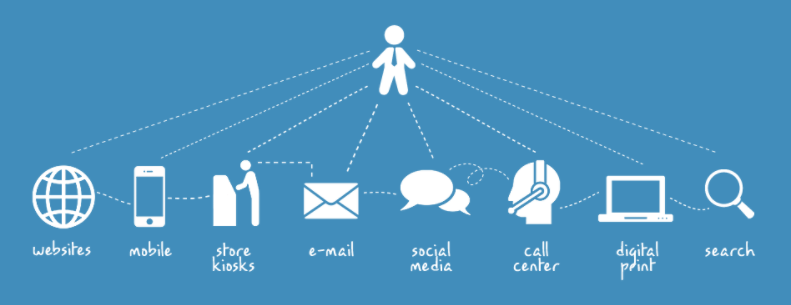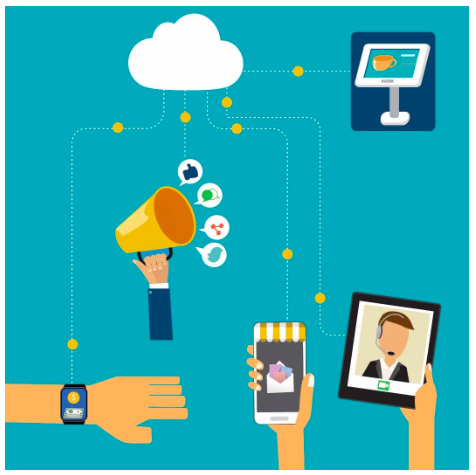How much value can you get from connecting customer feedback across all the touchpoints of your customer’s journey?
Collecting feedback is critical to improving customer experience, developing better products and services, and nurturing customer love. Unfortunately, most companies only collect feedback in a single place, and usually only after a transaction has been completed. Even when customer sentiment or opinion is captured in different ways or through distinct channels, companies often fail to ‘stitch’ together the emotions and comments expressed, and evaluate exposed trends to build a more complete picture of a customer’s journey experience.
In 2001, the average consumer used only two touch-points when buying an item. Today, consumers use an average of almost six touchpoints, according to Oracle.

What are “touchpoints” and how do brands support them?
A touchpoint is defined as any time, place or channel where a customer interacts with your company. This interaction can happen for the purpose of making a purchase, getting help or finding information, making a payment or checking status, or even just expressing themselves. Touchpoints aren’t limited to only the moments when a transaction occurs.
Terms like “multi-channel” (more than one), “cross-channel” (interactions transferred from one channel to another), and “omnichannel” (connected channels used together) are tossed around to describe how companies support a series or variety of touchpoints. Unfortunately, 67% of companies surveyed had limited or no integration across their different channel technologies, according to Adobe and Econsultancy. Managing customer experience and customer feedback becomes a free-for-all without some framework for integrating all the different touchpoints.
Omnichannel is the most advanced framework, guiding how multiple, connected channels are used by consumers at the same time to interact with a company. For example, someone shopping in a retail store can use use their mobile device to grab coupons from the vendor’s website, look up information, or employ an in-app mobile wallet for payment.
The most important feature of omnichannel customer experience is that each channel is interconnected to provide a more seamless experience and unified purchase journey. According to Google, omnichannel shoppers have a 30% higher lifetime value than those who shop using only a single channel.
Customer connection opportunities abound
Technology has been the real driver for customer experience today. Mobile form factors have expanded to include tablets and watches. Web applications are richer and have taken the place of traditional desktop applications. Wireless connections for all these devices have become ubiquitous, and 98% of Americans now switch between different electronic devices in the same day.
If you’re going to tap into customer sentiment across your customers’ multiple channel journey, you need to provide feedback mechanisms in different places (or devices) at different times. Since everyone carries around a mobile phone, this channel becomes the obvious place to start. Plus, it’s easier to listen to customers when you proactively gauge their experience anywhere, especially where interactions just occurred.
You need be prepared to grow loyalty and capture the voice of your customer anywhere it is being expressed. But these multiple channel scenarios don’t just apply to retailers—companies in travel, finance, entertainment, and other service businesses also support different kinds of touchpoints from which feedback is critical.
For example, imagine how much a car rental company can learn about the journey experience of its customers by collecting feedback across reservation, rental, and drop-off touchpoints. Here are a few scenarios:
- Using a mobile app or the web, customers reserve a car at the location they’re traveling to. Feedback gathered at the right time helps the company gauge the effort that was required to make that reservation, and how to improve the experience to make future scheduling easier.
- After picking up the car, feedback provided at the rental location kiosk helps the company streamline the process of putting people in cars, reduce the time involved, and eliminate any frustration.
- Dropping off the car at the end of the trip, customers usually have a rich set of feedback to share around the quality and performance of the vehicle, the ease of returning it to the drop-off location, and maybe even how their price paid reflects the value of the rental. Again, using their mobile phone or maybe even a smartwatch, airport kiosk, or a website later, feedback from their experience helps the company understand the likelihood that those customers will return next time—or even promote the brand to colleagues.
As you can see, different stages of the journey experience, coupled with different types of interactions, help the company make decisions around improving CX and building loyalty. When asked, 72% of consumers said they would rather connect with brands through a more seamless experience involving multiple channels, so the only way to remove “the seams” is to gather actionable feedback across all the interactions.
Adding the dimension of history adds even more insight. When data is available to compare past experiences with the latest transactions or service delivery, companies can pinpoint when customers first came to love their brand, or perhaps fell short and lost a future customer.
Gathering feedback across multiple touchpoints is your winning strategy
Properly gauging customer feedback and experience is a multi-dimensional exercise across multiple channels and touchpoints. Understanding the events, actions, policies, and value that promote growth, rather than derail loyalty, is critical. But it only comes from proactively listening to most of your customers—not just the 1% that typically give feedback only when they need to share a complaint or offer rare praise for a unique incident.
Feedback around a singular touchpoint is important, but only offers a snapshot of what is happening and how likely customers are to return. Feedback across multiple touchpoints offers a much more complete picture of how customer-centric your company behaves across all the markets you serve.
